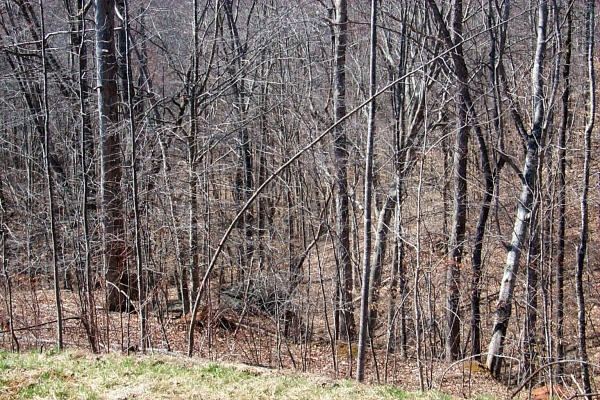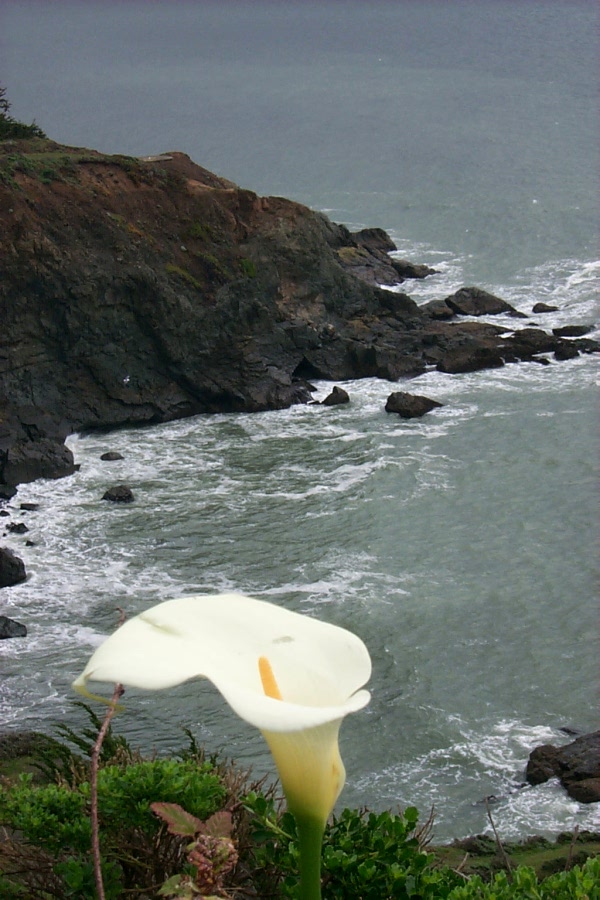
The woods, from the deck at the back of my house
This time of year especially, I miss the California coast. It’s wildflower time at Point Reyes, the best time of year to hike along those grassy promontories above the sea. When I had to move inland, away from the sea, I knew somehow that life would be tolerable only if I was near the woods. The woods are a compensation for the sea.
Metaphorically, they are similar. If we were analyzing dreams, or the symbolism of woods and sea in a novel, we would encounter the same symbols: mystery, depth, danger, fear, the unknown. Does there live an adult who isn’t at least a little afraid to go into the woods alone at night?
What I find surprising, though, is the appeal of woods in winter. It is as though the water is clear. You can see into the depths. When the leaves come, as they will within the next few weeks, that clarity and silence are lost. The woods will be teeming with life. The sound of the wind in the leaves is not unlike the sound of the surf. And when there is a storm, the thrashing in the woods is not unlike the waves crashing against the rocks. The symbolism of that thrashing and crashing are the same: foreboding, the power and volatility of nature, the inevitability of change.
These are real woods here. If you look at these woods from above in Google Earth, you can see that the woods go on almost continuously to the north and west, into the Appalachians. No wonder we get bears here from time to time.
I am always frustrated at how hard it is to photograph the woods. I think this is because a two-dimensional photograph cannot capture the depth of the woods. A 3D photo of the woods might do the trick.

The Pacific from the Marin Headlands across the water from San Francisco
